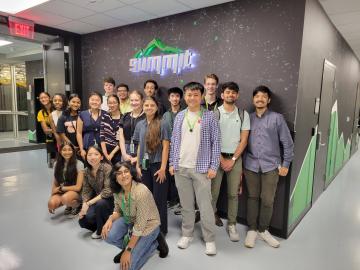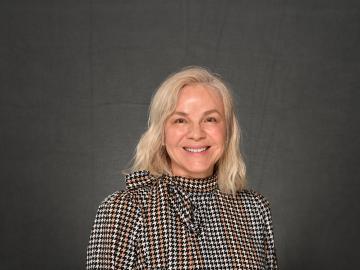Filter News
Area of Research
- (-) Clean Energy (111)
- (-) Supercomputing (96)
- Advanced Manufacturing (3)
- Biological Systems (3)
- Biology and Environment (60)
- Building Technologies (3)
- Climate and Environmental Systems (2)
- Computational Biology (1)
- Computational Engineering (1)
- Computer Science (2)
- Electricity and Smart Grid (1)
- Energy Frontier Research Centers (1)
- Energy Sciences (1)
- Fossil Energy (1)
- Fuel Cycle Science and Technology (2)
- Fusion and Fission (19)
- Fusion Energy (4)
- Isotope Development and Production (1)
- Isotopes (15)
- Materials (128)
- Materials Characterization (2)
- Materials Under Extremes (1)
- National Security (28)
- Neutron Science (58)
- Nuclear Science and Technology (16)
- Nuclear Systems Modeling, Simulation and Validation (1)
- Sensors and Controls (2)
News Topics
- 3-D Printing/Advanced Manufacturing (15)
- Artificial Intelligence (15)
- Big Data (3)
- Bioenergy (5)
- Biology (6)
- Biomedical (4)
- Biotechnology (3)
- Buildings (12)
- Chemical Sciences (8)
- Clean Water (1)
- Climate Change (13)
- Composites (5)
- Computer Science (16)
- Coronavirus (2)
- Critical Materials (4)
- Cybersecurity (4)
- Decarbonization (16)
- Energy Storage (16)
- Environment (10)
- Exascale Computing (12)
- Fossil Energy (1)
- Frontier (15)
- Grid (15)
- High-Performance Computing (18)
- Hydropower (1)
- Machine Learning (5)
- Materials (12)
- Materials Science (3)
- Mercury (1)
- Microelectronics (1)
- Microscopy (2)
- Nanotechnology (2)
- National Security (5)
- Net Zero (2)
- Neutron Science (2)
- Nuclear Energy (2)
- Partnerships (7)
- Physics (2)
- Polymers (3)
- Quantum Computing (7)
- Quantum Science (5)
- Renewable Energy (1)
- Security (4)
- Simulation (11)
- Software (1)
- Space Exploration (1)
- Summit (8)
- Sustainable Energy (6)
- Transportation (17)
Media Contacts

It would be a challenge for any scientist to match Alexey Serov’s rate of inventions related to green hydrogen fuel. But this researcher at ORNL has 84 patents with at least 35 more under review, so his electrifying pace is unlikely to slow down any time soon.

Researchers at ORNL became the first to 3D-print large rotating steam turbine blades for generating energy in power plants.

A team of computational scientists at ORNL has generated and released datasets of unprecedented scale that provide the ultraviolet visible spectral properties of over 10 million organic molecules.

Research performed by a team, including scientists from ORNL and Argonne National Laboratory, has resulted in a Best Paper Award at the 19th IEEE International Conference on eScience.

This summer, ORNL welcomed more than 500 students to campus through the lab’s range of internship programs, which are offered in areas such as biology, national security and computing.

ORNL and Caterpillar Inc. have entered into a cooperative research and development agreement, or CRADA, to investigate using methanol as an alternative fuel source for four-stroke internal combustion marine engines.

Within the Department of Energy’s National Transportation Research Center at ORNL’s Hardin Valley Campus, scientists investigate engines designed to help the U.S. pivot to a clean mobility future.

Researchers from institutions including ORNL have created a new method for statistically analyzing climate models that projects future conditions with more fidelity.

Four scientists affiliated with ORNL were named Battelle Distinguished Inventors during the lab’s annual Innovation Awards on Dec. 1 in recognition of being granted 14 or more United States patents.

Hilda Klasky, a research scientist in ORNL’s Computing and Computational Sciences Directorate, has been named a fellow of the American Medical Informatics Association.




